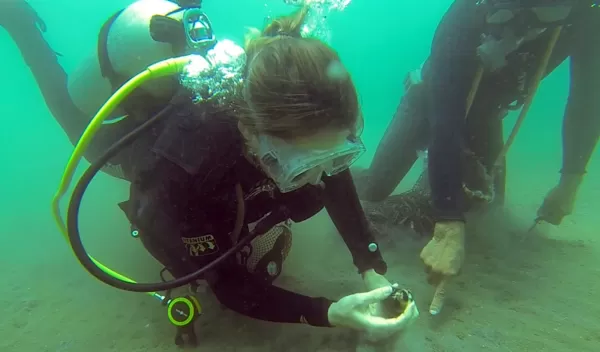
Size-selective fishing results in trade-offs between fishery yield, reproductive capacity
How people fish matters as much as the quantity they’ve harvested, say University of Maine researchers Kara Pellowe and Heather Leslie.
Their study in Ecosphere details the impacts of size-selective fishing on an economically important species of clam in Baja California Sur, Mexico.
The information is critical for fisheries managers to design policies that balance short- and long-term ecological and economic goals, say the scientists, who are based at the Darling Marine Center in Walpole, Maine.
The National Science Foundation-funded research finds that aligning size-selective fishing with the life history of target populations and stakeholders' goals is critical to sustaining fisheries as well as valuable food and livelihoods.
Over the last six years, the researchers traveled to Baja to work closely with fishers who harvest chocolate clams (Megapitaria squalida) near Loreto Bay National Park on the Baja peninsula.
"Most fishing, whether in Mexico or Maine, is inherently size-selective," says Pellowe. "Fishers preferentially target certain sizes of fish, often because of the economic value or cultural preferences associated with different-sized seafood products."
Like the soft-shell clam in Maine, the Mexican chocolate clam is a culturally and economically important species, providing food and income for many households, particularly at times when other opportunities are scarce.
Despite the species' importance, many aspects of the biology of Mexican chocolate clams were unknown. Pellowe and Leslie used information collected over years of ecological fieldwork to develop a model of how the Mexican chocolate clam population and fishery would be expected to respond to different size-selective fishing scenarios.
"This research team applied basic science techniques to aid fisheries management decisions that could have major implications for the conservation of this species," says Betsy von Holle, a program director in NSF's Division of Environmental Biology.


